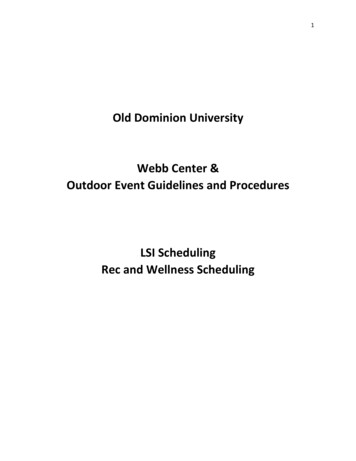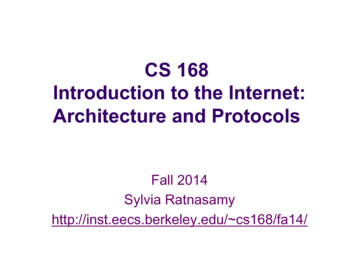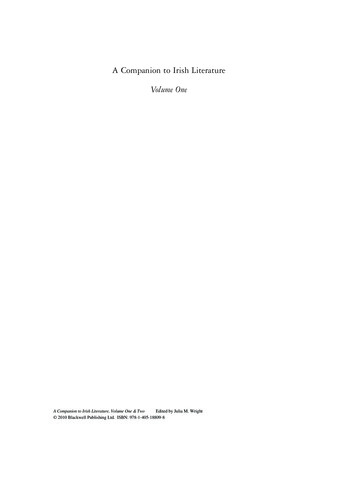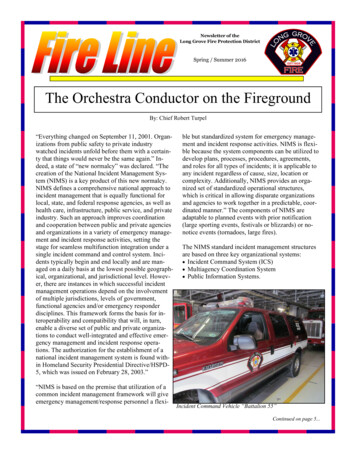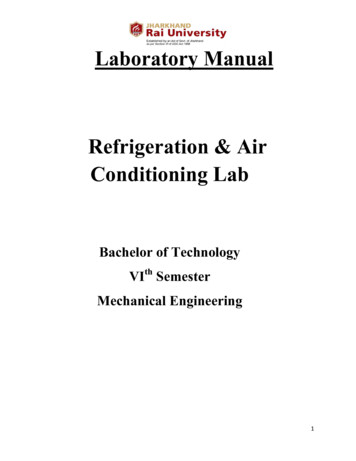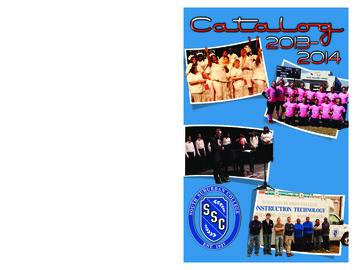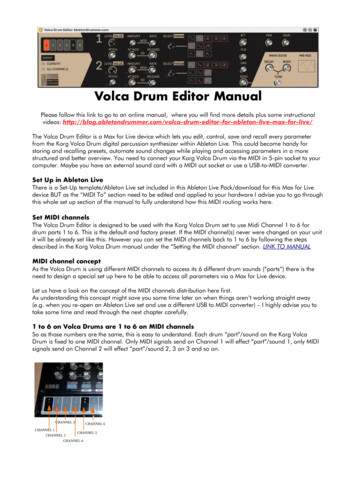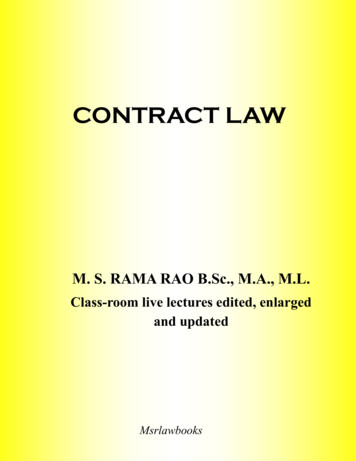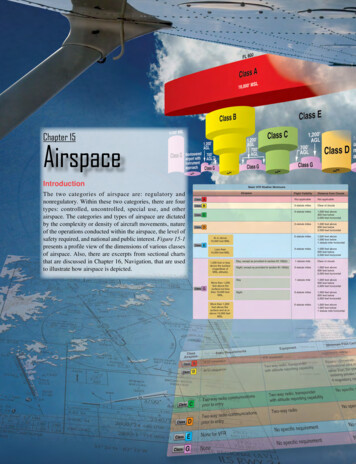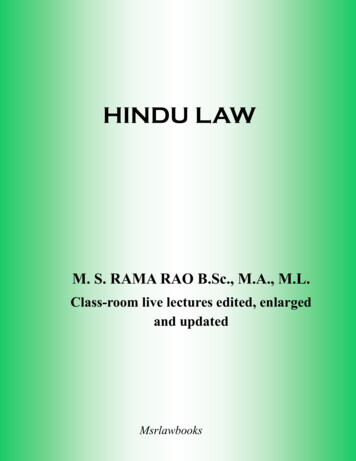
Transcription
HINDU LAWM. S. RAMA RAO B.Sc., M.A., M.L.Class-room live lectures edited, enlargedand updatedMsrlawbooks
HINDU LAWM S RAMA RAOE-book based on live lecturesPage1Edited, enlarged with Amendments, Case lawmsrlawbooksHINDU LAW
INTRODUCTIONHindu Dharma-is one of the oldest jurisprudences of the legalworld. The written Smritis are: Manusmriti, Yajnavalkya Smriti andNaradasmriti. These are as old as 13th Century B.C. The termDharmasastra applies to these Smritis generally. The Sanskrittreatises on these Smritis, appeared as comrnentaries and Digests.The most important of them are 1) Mitakshara written byVijnaneswara(1100 A.D.) (2) Dayabhaga written by Jimutavahana(1300 A.D.). These two are called the School of Hindu Law.Mitakshara is being followed in all parts'of India except Bengal &Assam where Dayabhaga has its sway.Apart from there commentaries there are pthers held by juristswith great esteem:- 'Smriti Chandrika' by Deva Nanda Bhatt,' VivadaRatnakara' by Chandeswara, 'Parasara madhaviya' byMadhavacharya, 'Vivada Chinthamani', by Vachaspati, 'SaraswatiVilasa' by Pratapa Ruradeva, 'Vyavahara Nirnaya' by Varadaraja,'Nirnaya sindhu' by Kamalakara, 'Daitaka Mimamsa' by NandaPandita, 'Dattaka Chandriks' by Kubera etc.This list shows the formidable resources. A gleaning into thesecan be had by reading the 'History of Dharmasastra's by Dr.Mahamahopadyaya Kane.For a Thorough Knowledge on Hindu Law one must sit withthese great masters.Page2To the students and beginners this is a list for their futurereading & specialisation. We have now the codified Hindu Law in theform of Acts and also the uncodified Hindu Law, and also thedecisions of our Supreme Court and various High courts;.msrlawbooksHINDU LAW
Hindu Law(i) Uncodified Law1.Sources of Hindu Law,2.Mithakshara & Dayabhaga Schools.3.(i) Stridhana (ii) Widow Yestate (iii) Reversioners.4.(i) Mithakshara ion-re-union.(ii) Dayabhaga Law.(iii) Property: Self acquired, Ancestral,Joint Venture Acquitions. Gains of Learning Act.5.Debts: (a) Liabilities-Nature, Meaning, Scope.(b)Antecedent Debts.(c) Pious obligation-Doctrine-Scope-(Vyavaharika iAvyavaharika Debts.).- 6.Gifts.7.' Wills.8.Benami Transactions.9.Religious & Charitable Endowments.10. Law of Damdupat.11. Conversion.(ii) Codified Hindu Law3.Hindu Minority & Guardianship Act 1956-Types of Guardian ship powers-Functipns-DefactoGuardian-Minor's interest.Hindu Succession Act 1956:i) Intestate Succession-General ii) General Provisions relating to Succession, iii) TestamentorySuccession, iv) Sn. 14: Abolition of Widow's estate-Reference to old Law. compari son thereof.Disqualification & exclusion from inheritance. Marumakkathayam, Aliyasantana & Nambcodri Law.4.3i)Hindu Marriage Act 1955 & Amendments 1976-valid, voiand voidable Marriages-Restitution of conjagal rights-NulDivorce,2.Hindu Adoption & Maintenance Act 1956.Adoption:- Doctrine & its scope-changes made in the N,, Act-invalid adoptions-Kritrima-Illatoni'ii)Maintenance: Nature-extent-persons entitied-amounts-Right to Maintenance how protected againstalienations etc.Page1.msrlawbooksHINDU LAW
QUESTIONS-BANK1.What are the various sources of Hindu Law. Explain each sourcein detail.Distinguish between Dayabhaga and Mitakshara School.2.3.State & explain the conditions of a valid Hindu Marriage. Distinguish a void from a voidable Marriage,t .TJ' 4.5.6.7.' ' : '- . 4 ". .-'. ' ''- '- '"'' (i) Explain 'Restitution of Conjugal rights' and' Judicaial Separation*. ',:. -; - '(ii) Enumerate the various grounds on which a divorce can beclaimed under the Hindu Marriage Act. Examine in detail 'Desertion' and 'Cruelty' as grounds for divorce.What is Adoption? Who can adopt & who can be taken inAdoption? What are the essentials of a Valid Adoption? Referto the changes effected by the Adoption & Maintenance Act1956 and recent legislation.Who are the Guardians recognised by the Hindu Minority andGuardianship Act? What are their powers and functions. Refer to their powers of alienation.Define Maintenance. Explain when can a wife claimMaintenance from her husband? ' '8.9.10.'; -- '"*State & Briefly explain the General Provisions relating to suecession common to male & female under the Hindu SuccessionAct 1955.Explain the essential features of a Mithakshara Coparcenary.What are the different kinds of coparcenary property? What isthe position under the Hindu Succession Act 1956?. (i) Explain a) Ancestral Propertyb) Self Acquired Property.c) Joint Venture Property.Page4(ii) Who is a Karta? What are his powers and fundions? Whencan healienate the joint Hindu Property.11.Who is Partition? What are the different modes of effecting partition? 'Once is a partition made' Explain.12.What is Benam i Transaction? Discuss the position of aBenamidar.13.(i) What is Stridhana? Discuss its origin & Development.(ii) Write a note on Widows estate. What are the changes madein Sn.14 of the Hindu Succession Act.msrlawbooksHINDU LAW
14.15.What are "antecedent debts?" Explain with casesWrite an essay on 'Pious Obligations Refer to decided cases.(1) How are religious & charitable endowments created?Write*a note on debutter property. . «(2) Who is a Shebmt or Maharit? What are his poWeps &functions, Can he be rembvedi Refer to leading cases.17. Write short notes on :Legal Necessity.Sapratibandhadaya and Apratibandadaya.HinduGains of learning Act 1930.Factum Valet, Sapirida, Damdupat Rule.Full blood, Half Blood; Uterine btood.Agnate; Cognate.Non-Saudayika.Illatom & Dwavamshayana.De facto Guardian.Bandhus, Samanodakas.Succession to females.Per capita, Per Stirpes.Manusmriti, Ramnad Case.Approvier's Case, Hanuman Prasad's Case.Page516.msrlawbooksHINDU LAW
Hindu - LawContentsChaptersPagesCh.l SOURCES OF HINDU LAW1:1 Sources1:2 Mitakshara and Dayabhaga1:3 Hindu "*.16!'Ch.2 MARRIAGE AND DIVORCE2: I.Hindu marriage2:2. Condition of a valid marriage2:3, Void Voidable marriages2:4. Restitution of Conjugal Rights2:5. Judicial Separation2;6. Grounds for Judicial Separation2:7. Grounds for divorce Sn.13. . . . ,- .Ch.3 ADOPTION3:1. Meaning and object3:2. Changes in adoption Law3:3, Essentials of a valid adoption3:4. Legal effects of adoption3:5. Pwayamahayana(adoption) ,3:6. Kritrima adoption;/3:7. Illatom adoption* , 21"Ch.4 MAINTENANCE,4:1. Meaning4:2. Maintenance of wife4:3. Maintenance of widow by father-in-law4:4. Maintenance of children and aged parents4:5. Maintenance of dependants4:6. Amount of maintenance(Sn.23)283030303-1Ch.5 GUARDIANSHIP5:1. Guardian5:2. Natural Guardians5:3. Powers of a Natural Gurdian5:4. Testamentary Guardian(Sn,9)5:5. Court Guardian5:6. Defacto Guardian333334343535.Ch.6 MITAKSHARA COPARCENARYmsrlawbooks.991214141516»6Page.HINDU LAW
6:1. Characteristics of a Mitakshara Coparcenary6:2. Joint Hindu family6:3. Ancestral property6:4. Separate property36393941Ch.7 PARTITION7:1. Partition7:2. Modes of effecting partition7:3. Re-opening of partition7:4. Reunion(Blending)43444646Ch.8 KARTHA8:1. Kartha ,8:2. Kartha's power of alienation4748Ch.9 SUCCESSION9:1. General rule of succession to males9:2. General rules of succession to females5152Ch.10 STRIDHANACh.ll SUCCESSION- 211:1. General rules of succession commonto males or females5Ch.12 ENDOWMENTS12:1. Meaning and nature5812:2. Status powers and Functions ofshebait or mahunt.,,Page7Ch.13 PIOUS OBLIGATION13:1. Doctrine13:2. Avyavaharika Debt.'.6163Ch.14 MISC14:1. Factum, valet6614:2. Gains of learning Act 19306614:3. Dandupat,6714:4. Sapinda68f14:5. Legal Necessity6814:6. Benami Transaction6914:7. Apratibandadaya and sapratibandadaya (Heritages)14:8. Half,FuIl and uterine blood7214:9. Agnates, Cognates7214:10. Per capita, per stifpes.74msrlawbooksHINDU LAW 570
14:11. Sapinda, samanodak and bandhu14:12. Saudayika, Non-Saudayika.14:13. Satapadi14:14. Dasi putra14:15. EscheatCh.15 SUCCESSION-3Heirs, HUF business, etc.15:1. Disqualification of Heirs-Hindu lawand H.S. Act.15:2. HUF business and p. firm757677787815:3. Changes under H.S. Act827981Ch.16 LEADING CASES.16:1. Appovierv. Ramasubbien8416:2. Collector of Madhurav. Ramalingam8516:3. Devaki NandanV.Muralidhar [see ch 6(ii)]8516:4. Tulasamma V. Seshareddi85t16.5. Sawan ram v. Kalavanti8616:6. Brig Narain V. Mangal prasad8616.7. Hemraj V.Khemchand8616.8. Arunachala mudaliar V. Muruganatha8616:9. Venkayyamma V. Venkataramanayyamma8616:10. Hanuman prasad's Case.8616:11. Puttarangamma V. Rangamma8716:12. Peddasubbiah V. Akkamrna8816:13. Kotturuswami V. Veeravva.8816:14. Amarendra mansingh v. Sanatansingh [ch.3.4]Page8Ch. 17 MARUMAKKATHAYAM, ALIYASANTANA& NAMBOODRI SYSTEMS - SALIENTFEATURES.msrlawbooksHINDU LAW 89
HINDU LAWCHAPTER -1Sources of Hindu LawCh.l. Sources:Hindu Law is one of the oldest systems of personal law.Its sources are :Veda Smriti Sadachara Sampada Priyamatmanaha.Evam Chalurvidam Prahuhu Sakshat Dharmasya lakshanam.i) Vedas ii) Smritis iii) Custom iv) Equity & Good Conscienceare the four sources of Dharmav) Judicial precedents and vi) Legislation, are two additionalsources.The concept of Dharma is of great protean significance. Anexcellent elaboration of it is found in the History of Dharma Sastrasby Prof. Kane (Vol. 1). English jurists also used the term. "Dharma",as this had wider significance and value than "Law".i) Vedas :The meaning is 'Revelation'. The earliest sacred book amongthe Hindus were called the vedas. The main work of compilation wasmade by ' Vedavyasa'. It is he who classified the Vedas into Rigveda,Yajurveda, Samaveda & Atharvanaveda. Each Veda in turn consistsofSAMHITHS & BRAHMANAS.Samhita (Mantras) is a collection of Mantras. Mantra is thederivative of 'Man', which means 'to think'. These are thoughts thatillumined the darkest regions and recesses of the human mind. Thereare millions of them.The mantras have been give theological exposition in theBrahmarias, Series of injuctions are provided, In later years collections of these became essential and were epitomised in the form ofsutras (Thead). The Sutras were a bewildering maze of vedic rituals;and presented a clue to the intricate labyrinth of Brahmanas.Page9ii) Smriti :Means that which is 'Remembered'. The dark unfathomed cavesof vedic ocean contained innumerable gems of the purest ray serenebut only a few could dive down to bring them to the light of the day.Such gems were the distilled wisdom of the ages. But they were learntby heart and were remembered. They were transferred by words, fromgeneration to generation.Three division are of interest. Srauda sutras, Grithya sutras andmsrlawbooksHINDU LAW
Dharma sutras(Rituals, domestic ceremonies and forensic law). TheDharma sutras were the legal maxims dealing with the law of theGovernment, of the people and of the society. It was from these thatManu, Yajnavalkya and others have drawn freely. The primary authors of the smritis are the great sages, like Angiras, Yama,Apasthamba, Brihaspati, Daksha, Gouthama, Vasista.Among the great works Manu Smriti is of paramount authority.Whatever Manu said was medicine. It was a collection of the lawsand also the theological and metaphysical speculation running to 1.8divisions.Next in order comes Bhashyas-commentaries Yajnavalkya Smrit;and Narada smriti. There are also many other commentaries and digests. Commentaries on the code of Manu and Yajnvalkya smriti artilluminative. The most authoritative and celebrated of all are: the text;Mitakshara by VIJNANESWARA and Dayabagha b JIMUTAVAHANA.These two Mitakshara and Dayabhaga are, in particular, commendable schools (called so by Colebrook) for the interpretation of Hindu Law, The Mimamsa rules of Jaimini are also o:some consequence.Other Bhashyas:Veeramitrodaya by Mitramisra, Vivade Ratnakara byChandeswara, Smriti Chandrika by Devan and Bhat Vyvashara Mayukaby Nilakanta, Kubera's Dattaka Chandrika (South India) DattakaMimamsa by Nanda Pandit (North, India).iii) Custom :The third source is Sadachara, i.e., the usage of Virtuous men.It was not a written law. But it grew from the consent of all men.Custom as defined by Austin means the positive law enshined byJudicial recognition upon pre-existing custom. As per the word'Sadachara' the practices of good men were considered as superiorevidence of the prevalence of Dharma. In the Ramnad casePage10(i.e., Collector of Madurai V. Muttu Ramalingam) itwas held that'Under the Hindu system, clear proof of usage would outweighthe written texts of law.In this case M was a Zamindar. In 1795, his property was takenover by British, as he had waged war against the Govt. But the property was returned to his sister Rani Mangaleswari in 1803. She had noissues. She took Annaswami in adoption. He too had no issues, hetook Ramaswamy in adoption. He too had no issues. When he died,his wife Rani Parvati took Muthu Ramalingam in adoption. This wasrejected by Revenue Dept. as void.Rani Parvati filed a suit for declaration that the adoption wasvalid and the court decreed in her favour. The collector, appealed tothe Privy Council. Held, taking adoption after the death of the husmsrlawbooksHINDU LAW
band, with the consent of the relatives was a custom in vogue inMadurai and this custom had been established. Hence, it upheld theadoption as valid.Custom must have a long usage, and must not be contrary tojustice, equity and good conscience. It must be self-consistent andcomplete by itself. It must have been acted upon for a long time aswas declared by the Supreme Court in Saraswathi Ammal Vs.Jagadambal.Custom may be local, Regional or peculiar to a family. If theabove requisites are fulfilled, the courts recognise them as "law".Thus, this is an independent source of law. iv)Equity and Good conscience :As a source of law this has no independent treatment. It isrelative and dependent on the circumstances. Primarily this was thedomain of the courts.v) Judicial Precedents :Though in point of time this is of recent origin, the contributionby the judiciary to the field of Hindu Law is commendable. A numberof decisions of the courts are quoted and followed.vi) Legislation :The final but an important source is legislation. Sweepingchanges have been made by effecting changes to various statutoryenactments. Innovations additions and changes have been made. TheCaste Disabilities Removal Act of 1850, abolished the Law whichpenalised the renunciation of Hindu religion. The Hindu Widow'sRemarriage Act legalised widow remarriages. Child Marriage RestraintAct 1929 made the child marriages punishable. Special Marriages Act1954 provided for marriage by Registration.Page11The recent statutes: The Hindu Marriage Act, the Hindu Adoptions and Maintenance Act, The Hindu Minority and G irdianshipAct, The Hindu Succession Act, have revolutionised the old law intheir respective areas.msrlawbooksHINDU LAW
Ch. 1.2 MITAKSHARA AND DAYABHAGADifferences:The two schools Mitakshara and Dayabhaga spring from thesame source the ' Smriti'. Vignaneswara's commentary about the 10thcentury, applicable throughout the territory of India, came in the formof 'Mitakshara' (a treatise). Jimutavahana's commentary, the'Dayabhaga' became operative in particular areas in India, namely,Bengal and Assam. The two systems may be compared to the Branchesof a single tree, the Smriti. Mr. Cole-Brooke called them the Schoolsof Hirjdu law.Differences :MithaksharaDayabhaga1. Heritage : Recognises, two clas 1. There is no such division. Allses of heritage-obstructed and non- property is considered obstrucobstructed (appratibanda daya and ted,Saprathibandadaya.)2. The right of the coparcener ari- 2. The right does not arise byses by birth only. This is the corner- birth alone. His right arises onstone of Mithakshara.on the death of his father.3.Recognises a coparcenary between the father and sons. Rightto partition is recognised. TheHead of the family is the Karthawho may alienate property forlegal necessity.3. Dayabhaga does not recognisesuch a coparcenary. The son hasno partition. The father is the absolute owner of the property andauthorises to dispose of at hispleasure.4.Religious efficacy is not theguiding rule.The natureof suecession is by survivorship. Agnates are preferred to cognates.4. Religious efficacy is the rulingprinciple in finding out the order of succession,These are the major differences between these two schoolsthough the source is "the smriti".Page125. The widow of a coparcener, 5. Dayabhaga recognises the rightenjoyed a limited estate for her of a widow in an undivided familylife time. After her death theto succeed to her husbands shareproperty reverted to the Rever- if he dies without issue. She maysioners (heirs of the husband). in such cases enforce-a partitionThis has been abolished under Sn. on her own accord. 14 of HinduSuccession Act.1956.msrlawbooksHINDU LAW
Ch. 1.3HinduAncient Sanskrit texts have not used the word "Hindu". Hinduis derived from Indus' or vSindu' and it denoted the people living eastof the river Sindu. Etymologically Hindu means a person to whom"Meannes" is an offence. The meaning given by Tilak to "Hindu" wasaccepted by the courts. "A Hindu is a person who respects Vedaswith devotion, considers road to salvation as varied, and realisationthat plurality of "Gods" was the basic truth". In interpreting, the courtshave put a liberal construction, to construe who a Hindu is.Hindu includes a Hindu by birth, by religion, by conversion orreconversion ; it also includes Virashivas, Lingayats, Brahmo, Aryaand Prarthana Samajits, Buddhists, Jains and Sikhs.Statutory Definition :The four Acts:The Hindu Marriage Act, The Hindu Succession Act, The Minority and Guardianship Act and the Hindu Adoptions and Maintenance Act, have specified the persons who are govened by HinduLaw.The Hindu Law applies :i) to Hindus by birth and to Hindus by religion in any form. Thisincludes Virashiva, Lingayats, and followers of Brahmo, Prarthanaand Arya Samajists.ii) to any person who is a Buddhist, Jaina, or Sikh by religion.iii) to any person domiciled in India and who is not a Muslim,Christian, or Jew by religion;The presumption is that a person domiciled in India is a Hinduif he is not a Muslim, Christian, Parsi, Jew by religion.The Act in the Explanation further provides as follows:iv) The following persons are Hindus, Buddhists, Jains or Sikhs.a) Children (legitimate or illegitimate) of parents who are bothHindus, Buddhists, Jains or Sikhs.b) Children (legitimate or illegitimate) of parents one of whomis a Hindu, Buddhist, Jain or Sikh.Page13c) Converts or re-converts to Hindu, Buddhist, Jaina or Sikhreligion.v) The Acts shall apply to members of Schedules Tribesaccording to Notification by the Central Govt.vi) Conversion :According to Hindu Sastras "a Hindu is born, and, not made".But, this has been changed and a non-Hindu can become a Hindu byconversion. This is established in a series of cases.The courts have held that a formal ceremony is not necessarymsrlawbooksHINDU LAW
for conversion to Hinduism ; If the conversion is with bona fideintention, and the person has taken to a Hindu mode of life and hasfollowed its usages and customs, or the community has approved ofhim he is a Hindu.If a child has been brought up as a Hindu, according to theusages and Customs of the Hindus, and, the community has approvedof him, the child is a Hindu. No formal conversion is necessary.Leading Cases:In Perumal V. Ponnuswamy, the Supreme Court held thatmere declaration by a person that he is a Hindu, will not converthim into Hinduism. The persons bonafide intention in his conversionto Hindu faith and his conduct as evidence thereof are sufficient.No formal ceremony is necessary.In Commissioner of Wealth Tax V Sridharan the SupremeCourt has held that the son of a Hindu father and Christian mother(under Special Marriage Act), was a Hindu as the father had bonafideintention and had declared his family as a Hindu Undivided Family.Abraham V Abraham, the Privy Council decided that thepetitioner was a Christian, and, hence Hindu Law was notapplicable,Hindu Law does not apply to :Page14i) Illegitimate child of a Hindu father by a Christian mother,brought up as Christian.ii) Hindu converted to Christianity, or to Muslim or Jewish parsireligion.msrlawbooksHINDU LAW
CHAPTER - 2MARRIAGE AND DIVORCECh. 2.1. Hindu Marriage :a) Introduction : Marriage, according to Ancient HinduLaw , is a samskara or a sacrament and also an indissoluble union. Thewritings of the Smritikaras and the commentators, had settled HinduLaw of Marriage until the Britishers interfered by making certainchanges. " by legislation.b) Legislation : The first Act, which introduced somechanges,was the Hindu Women's Remarriage Act 1856. This wasfollowed by the Special Marriage Act 1872. The Hindu MarriageDisabilities Removal Act 1946 validated sagotra and sapravaramarriages. Many Regional Acts have also been made.After independence, under the 'Hindu Code Bill', a numberof changes were contemplated. Four major Acts were made.Concerning marriage, the Hindu Marriage Act 1955 was made.This was "amended by the Marriage Law Amendment Act 1976. Ch. 2.2. Conditions of a Valid Marriage :S.5 of the Hindu Marriage Act enumerates the various conditions of a valid Hindu Marriage. They are as follows :i) Parties must be Hindus :The marriage may be solemnised between two Hindus. Theword 'Hindu' is defined broadly by Sn. 2. Accordingly, Hindus byreligion. Virashaivas, Lingayaths, Brahmo Arya or PrarthanaSamagists; Sikhs, Buddhists and Jains are within the definition.However, the Act does not apply to : Muslims, Christians, Jews andParsis, by religion. Hence, if one of the parties is not a Hindu, thisAct will not apply. Special Marriage Act applies.Thus, the Act has provided for inter-caste and sub-caste marriages. Further, persons who are deemed Hindus as per the 'Act' mayalso marry. Under Hindu Marriage Disabilities Removal Act, Hindushaving the same gotra or pravara may also marry. Widows may alsomarry (Act of 1856). These are enabling acts.Page15ii) No spouse living :Neither party should have a spouse living at the time of themarriage. Hence only monogamous marriages are recognised andBigamy under Sn. 494 I.P.C. is punishable. Thus polygamy is abolished. A divorcee may marry after one year of the date of the finaldecree of divorce.If this condition is violated, the marriage becomes void, iii)msrlawbooksHINDU LAW
Unsoundness of mind:If a party to the marriage is incapable of giving consent (at thetime of the marriage) due toi) unsoundness of mindii) mental disorder to such an extent as to be unfit for marriageand procreation of childreniii) recurring attacks of insanity or epilepsy, the marriage isvoidable.The 1955 Act had provided Idiocy and lunacy as grounds. But1976 amendment has provided for above tests in respect of the mentalincapacity and of its nature at the time of the marriage.If this condition is violated the marriage is voidable. iv)Age of Marriage :The Act lays down that the age of the bridegroom should be 21years and that of the bride 18 years. Earlier the 1955 Act had fixed thelimits at 18 and 15.If this condition is violated, the parties are liable for punishment(Imprisonment or fine), but the marriage is not void or voidable.v) Prohibited degrees of relationship :The parties to the marriage should not be related within theprohibited degrees of relationship. However, if a custom or usagegoverning both the parties allows, nen the marriage is valid. Thecustom or usage, of course, must n he against public policy, e.g.marriage with a niece was held void Raman Gowda V. Shivaji).Persons who come with in the prohibited degrees are mentionedin Sn.3 (g).a) If one is a lineal ascendant of the otherb) If one was the wife or husband of a lineal ascendant ordecedent of the other.c) If the two are related as brother and sister, uncle and niece,children of two brothers, or of two sisters etc.If this condition is violated the marriage becomes void ab initioand the parties become punishable.vi) Sapinda Relationship:The parties to the marriage must not be sapindas of each other.Page16The Act provides a custom or usage, as an exception, if it permits each of the parties, but, this should not be against public policy.Sapinda relationship as understood by Mithakshara andDayabhaga schools is retained by the Act. Sapinda is 3 degrees onmother's side and 5 degrees on the father's side. If this condition ismsrlawbooksHINDU LAW
violated, the marriage become void ab initiovii) Consent by Guardian:This is repealed. The reason is that the age limit of the bride andthe bridegroom is raised to 18 and 21 respectively.viii) Ceremonies:Sn. 7 provides that the Hindu Marriage is to be solemnised according to the customary rites and ceremonies of either party to themarriage.Where 'saptapadi' is part of the ceremony, the marriage becomes complete and binding when the 7th step is taken by the brideand the bridegroom before the sacred fire.Hence, saptapadi is optional but must be performed if it is par;of the customary rites and ceremonies of the parties. In Ram Singh V.Sushila Rai the Supreme Court, declared the marriage as void, as thiscustomary ceremony common to both parties, had not been performedix) Registration (optional):Provisions are made to get the Hindu marriage, duly performed asper the rites and ceremonies of parties, registered at the office of th .sub-registrar of marriages. Application in prescribed form should lxfiled duly signed by all parties concerned. A certificate of Registration will be issued by the Registar if all formalities have been complied with. This is only an enabling provision, to register, after theHindu marriage is duly performed (Sn. 8).Ch. 2.3. Void, Voidable marriages :The Hindu Marriage Act has classified marriages into Valid.Void and Voidable marriages. (Conditions of valid marriage are statedabove Ch. 1.2. conditions (i) to (viii).Void and Voidable MarriagesVoid :i) If an essential requisite of the marriage is violated, the marriage is void ab initio.ii) The spouses are not recognised as husband and wife. Theydo not get the Marital status.Children are considered legitimate, andare entitled to maintenance only. They get no status on coparcenerwith rights there of. (sn.16).Page17iii) Either of the spouses may put an application for the annulment of the marriage.iv) Circumstances : Sn. 11ia) Marriage within the prohibited degrees of relationship, ismsrlawbooksHINDU LAW
void ab initio.(b) Marriage within the sapinda relationship is void ab initio.e) Marrying a second time when the first wife is living(Bigamous marriage).d) Non-observance of saptapadi where according to customit must be observed as part of the customary rites and ceremonies(Ram Singh and Sushila Bai).Voidable :i) If there is violation under special circumstances affectingthe interests of a spouse.ii) The spouses, have status as husband and wife until themarriage is declared void, by the court, at the option of the affectedparty. Hence, the marital status changes, when the courtdeclares the marriage as void.Children are legitimate and have theright to maintenance sn . 16.iii) Only the affected spouse may prefer an application toset aside the marriage.xiv) Circumstances : Sn. 12a) Consent obtained by force or fraud.Application should be filed within one year of the force orfraud and the petitioner should not have lived with the otherspouse, after the force or discovery of fraud.b) If the wife is pregnant at the time of the marriage by a personother than the husband the marriage is voidable at the instance ofhusband. At the time of the marriage, he must be ignorant of the fact,and he must file an application within a year of knowing the facts.Leading cases: (Supreme Court) M.M. Nanavati V. Sushila; ShivaguruV. Saroja. The facts were proved in both these cases. Divorce wasgranted.c) Husband impotent and marriage not consummated. (Leading case Yuvaraja Singh V. Yuvarani Kumari).d) Spouse incapable of giving consent, due to unsoundness ofmind and mental disorder.Page18Ch. 2.4. Restitution of Conjugal Rights (Sn. 9) :Where a spouse withdraws from the society of the other without reasonable cause, the aggrieved party may apply to the Districtcourt for a decree of restitution of conjugal rights. The court looks tothe truth of the statement made, the validity of the reasons tenderedand also to whether there are any other grounds to reject the application. If it finds satisfactory answers to the above, it gives a decree.msrlawbooksHINDU LAW
(Gangamma Vs. Hanumanthappa). If a spouse is suffering from incurable or infectious diseases, the court will not issue a decree forrestitution.Scope of the decree : The decree given by the court is merely ;idirective to the parties to realise their duties or responsibilities and tolive together. The court can only lead a horse to water, but cannotmake it drink!Restitution is based on the theory that both husband and wifeare entitled to the society of each other. There was no remedy in casea spouse did not oblige undar this. This was introduced in Englandthrough the Court to enforce by a decree and force the spouse toreturn to the other. Since the decision of Jadunath Bose V. ShamsonisaBegam, the Courts have taken jurisdiction in India. This section givesthis Jurisdiction to the District Court. With amendment of 1976,theburden of showing the reason is on the spouse who has withdrawnfrom the company of the other. Sn 2.5 Judicial Separation :Sn. 10 of the Hindu Marriage Act provides for Judicial separation. The Amendment of 1976 has made drastic changes in asmuch15as the grounds for judicial separation are the same as for divorce.Earlier, there were different grounds.Petition : The petition should he presented to the District Judgepraying for a decree for judicial separation. The grounds must be setout. Here also there are two addit
2. Hindu Adoption & Maintenance Act 1956. i) Adoption:- Doctrine & its scope-changes made in the N,, Act-invalid adoptions-Kritrima-Illatoni'ii) Maintenance: Nature-extent-persons entitied-amounts-Right to Maintenance how protected against alienations etc. 3. Hindu Minority & Guardianship Act 1956-Types of Guardian ship powers-Functipns-Defacto
